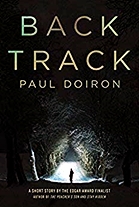REVIEWED BY DAN STUMPF:

DENNIS WHEATLEY – The Haunting of Toby Jugg. Hutchinson, UK, hardcover, 1948. Bantam, US, paperback, 1972. Several paperback editions have been published. TV film: BBC Four, UK, as The Haunted Airman, with Robert Pattinson as Toby Jugg.
I wuz had.
I mean there I was, all alone in the Big city and looking for some Halloween reading. I’d heard of Dennis Wheatley, and the cover of the Arrow paperback suckered me in good & proper. Then too, the story seemed pretty good at first, if a little long at 352 pages. So I settled myself in for a chilling tale of things Satanic, little suspecting….
Haunting is one of those books written as a series of journal entries, here by the eponymous Toby Jugg, an RAF flyer (this is set in 1943) recovering from war wounds that left him unable to walk. He’s also the heir to several million pounds and an industrial empire, due to inherit when he turns twenty-one in a few weeks, and he’s convalescing in one of the family castles, far from the madding bombs – and contact with society—under the watchful eye of Helmuth, a trusted family friend.

And oh yes: as the story opens there’s a giant spider outside his window trying to get in.
Wheatley sets this up capably, with Toby giving updates on the spider’s appearances and the reactions of Helmuth and the staff specially hired to look after him. We very quickly come to suspect he’s being gaslighted, and I won’t be giving anything away to say that he is—but there’s more to it than that. Something implacably evil has plans for Toby that go well beyond giant spiders at the window.
With all that going for it, >Haunting coulda been a contender. Only it ain’t.
The chief problem is Wheatley’s repetitive plotting. Time and again Toby comes up with a plan to thwart his persecutors, gets things rolling, comes close to success but… but we still have all those pages to fill so his efforts get frustrated with metronomic regularity. Once or twice I could have handled this, but after the fourth or fifth failure, and 200+ pages to go, I began to wonder if someone was trying to drive both of us mad.

Another thing: Maybe it sounds inconsistent to accept giant spiders and Satanic curses, then gripe about the story being unrealistic, but when Toby masters the art of Hypnotism and bends the unwilling and unsuspecting to his will just by eye contact, I felt like Wheatley must be kidding us. And when he forcibly hypnotizes someone by wrestling them to the ground and holding their eyes open, I devoutly wished he were kidding. Only he ain’t.
There’s also a strong current of Anti-Semitism here. “Anti-Semitism†is a term that gets entirely too much play these days, but Wheatley’s story posits that Jews, having killed Christ, will think small potatoes of serving Satan, turning Communist, bringing down the Government, and ushering in a Satanocracy. There’s even a racial slur, when Toby observes that a character with a tinge of Jewish blood can’t properly wear the clothes of an English Squire. Readers of vintage fiction like this should be prepared to overlook the attitudes of a different time, particularly toward minorities, but this taxed my tolerance for intolerance.

But I hung on to the end, buoyed, I must admit, by Wheatley’s gift for tension. And as the odds stacked up against Toby, and he worked even harder to plot an escape, I became emotionally invested in just how he would do it.
Came the dawn, and I realized what a fool I had been. Betrayed again by a smooth line and my own weakness, I finally got to the dramatic climax and found it the most blatantly stage-managed bit of deus ex machina claptrap I have ever read. I — literally, and without exaggeration — flung it across the room and regretted the squander of my precious youth on such drivel.
Steve, should I tell them about it? I’ll let you decide. We can either end it here with me waving readers away from this thing, or insert a SPOILER ALERT! And go on. In either case, they have been warned!

Surrounded by Satanists and menaced by a spider the size of a St Bernard, Toby Prays to God for help. And God answers. Suddenly Toby can walk again. And he has some mystical power that disintegrates the Spider. The Satanists are momentarily cowed by this display of Holy capabilities, but they rally to a counter-attack, driven on by their own greed and fear of demonic retribution. And just at that moment, another inmate who has been tunneling out in secret, hits the lake on the estate, and water gushes in, drowning the godless and sparing our hero.
For this I came three hundred and fifty pages??
